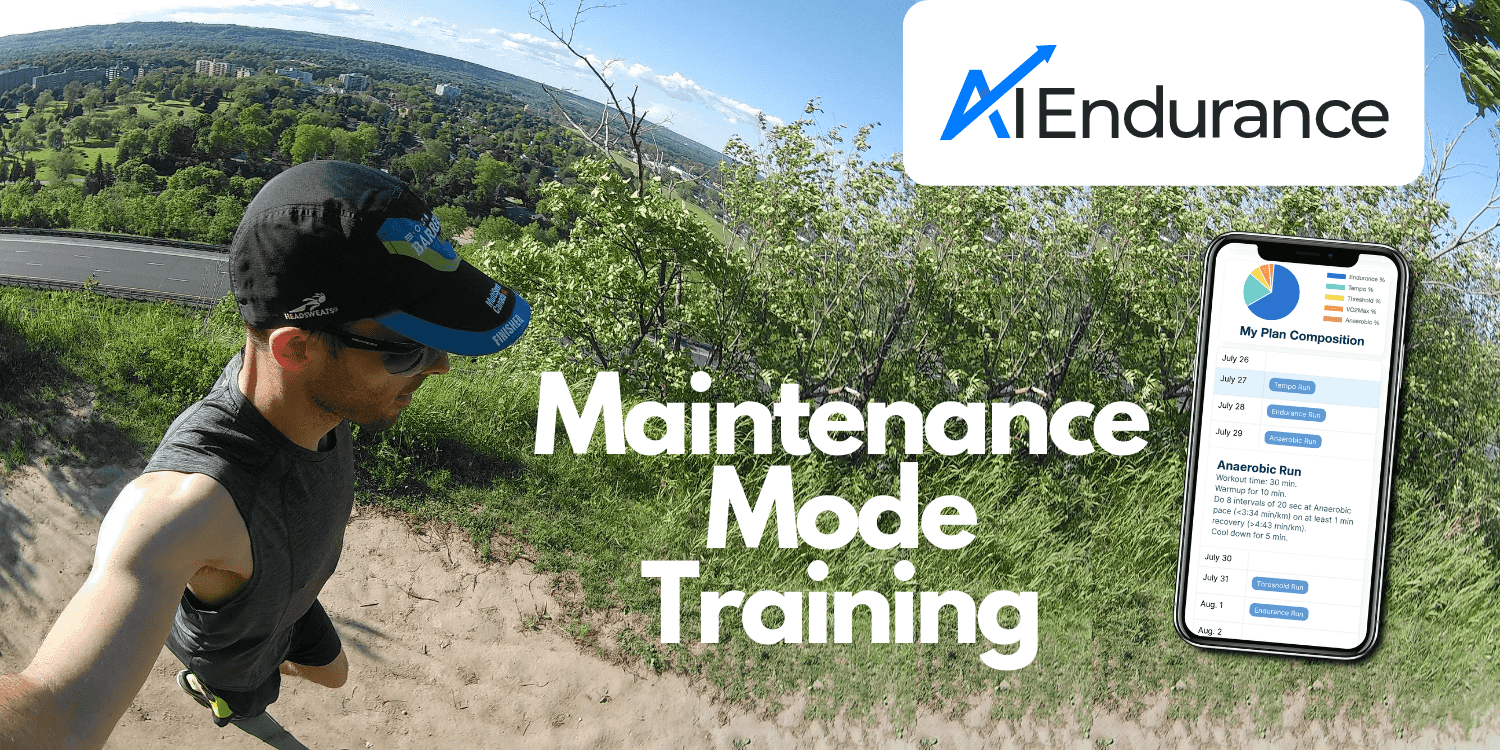
by Grant Paling. So you’ve read about my race. If you stuck with it, I know the report was quite epic (and that was the edited version!) so if you read it all, thank you! Having told you what happened in the race, I wanted to share a bit about how I used AI Endurance to prepare my race strategy.
If you haven’t seen my previous blogs about how I used AI Endurance for my training, the first thing I will say is those blogs preface what I am about to share. Because ultimately, nothing gave me more confidence leading up to the race than the fact that I was better prepared than I ever have been for any race. I followed the plan as closely as I could (a plan that was optimized for me) and it paid off.
In the weeks leading up to the race, I began to make a race plan. I had already done a full bike and swim practice 2 weeks before (which was part of the plan that AI Endurance gave me) and so I knew roughly where I was at from a cycling and running point of view. But I also thought I would dive into my predicted times:

Let’s start with cycling. There is an application called Best Bike Split where you can input your data - what bike you have, how much it weighs, how much you weigh and then stats such as the critical power – the “CP Cycling Predicted” above.
You can then upload the route (via GPX file for example) you are going to ride and it will tell you roughly how fast you should expect to do it.
This gave me a target time:

Obviously, the Best Bike Split doesn’t know there’s going to be nearly 2km of swimming before and a half marathon after. So then it was up to me to look at how I should adjust that target time to ensure I wasn’t completely burnt out for the run leg. Knowing it would likely be hot (which it was) I decided to roughly aim for 22.5 miles per hour (roughly 36 kilometres per hour) in order to do a time just under 2 hours 30.
When it got to the race, it was quite well set up for monitoring my progress as there were 4 laps of the course, meaning I could check I was on track every lap and ensure I wasn’t going too fast or too slow.
This worked brilliantly and I would say it showed in my official split times below:

Next was the run. You’ll have seen above my predicted half marathon time was 1 hour 30 minutes and 42 seconds. And knowing that the heat would be even worse by the time I got on the run – just after midday, when the Sun is at its highest and thus the heat at its hottest – I knew I had to adjust. Having run 1 hour 35 minutes in my practice bike and run two weeks before the race, I figured that somewhere around that would be a good balance allowed for the enhanced performance of race day (I don’t know what the science is but you just “find a bit more”) versus the reduction in performance I could expect from the heat. But mostly it was about managing the effort as well during the race.
Very usefully, AI Endurance gives you an upper and a lower margin, which was right in line (using the lower margin) with how I figured I should expect to perform:

So you’ll see there, the lower margin went down to 7:32/mile. Now check out my statistics from Strava for my race:

That’s quite impressive I would say, and again – knowing what you can do, especially in a near 5 hour race, allows you to really measure your effort. In shorter races, you can perhaps get away with going a bit riskier but I don’t believe at this distance you can.
It is also interesting I think to look at my “digital twin”, another feature of AI Endurance:

According to the graphic above, I outperformed my digital twin’s expected performance on the day. Like I said, I think you find a bit extra on race day!
But looking back longer, you can see how close the two lines are.
Two more graphs I wanted to share.
The first one is my recovery chart:

When I say I “emptied the tank” in the race report I shared in my last blog, you can see from the bottom right of this graph that I wasn’t lying!
But what is more interesting is the taper. The art of tapering down your training before a race is a much debated one and one that seems to come down to trying different things and seeing what works for you. So I didn’t follow the plan exactly to the letter those last two weeks. But you can see that my recovery was almost back to 100% for race day so I think I was again, quite spot on in following my instincts.
Secondly, my plan progress:

You can see here where I did stick largely to the plan (especially the Endurance workouts) but that perhaps less so to some of the other workout efforts. You can also see that according to the plan I did 3090% of what the plan recommended for Anaerobic workouts. I do track running on a Monday evening and I can safely say that is the culprit. What can I say, I love running in circles as fast as I can for 25 minutes every Monday. But I will be interested to see what my next plan looks like. I haven’t got the breakdown of the data but I suspect I stuck to the plan more as it went on and got closer to the event. I’ll be sharing how it looks for the second half of the season.
Speaking of which…I will reveal my plans in the next blog!
Thanks for reading.

Apple Watch has been a popular choice in running and triathlon. You can now track and execute your AI Endurance custom running, cycling and swimming workouts on your Apple Watch.

We explain how AI Endurance uses ChatGPT to help guide your triathlon, running and cycling training.

We get it, virtual races are not the same as actual races in terms of staying motivated. That's why AI Endurance is introducing a new maintenance running schedule to keep you in shape during the pandemic.

by Grant Paling. Triathlon is a sport that challenges both the body and the mind, and my journey through the European Age Group Championships this year has been a testament to that. In this blog, I reflect on the delicate balance between human grit and the transformative role of AI coaching, exploring how technology can enhance performance while leaving the final push to the athlete.